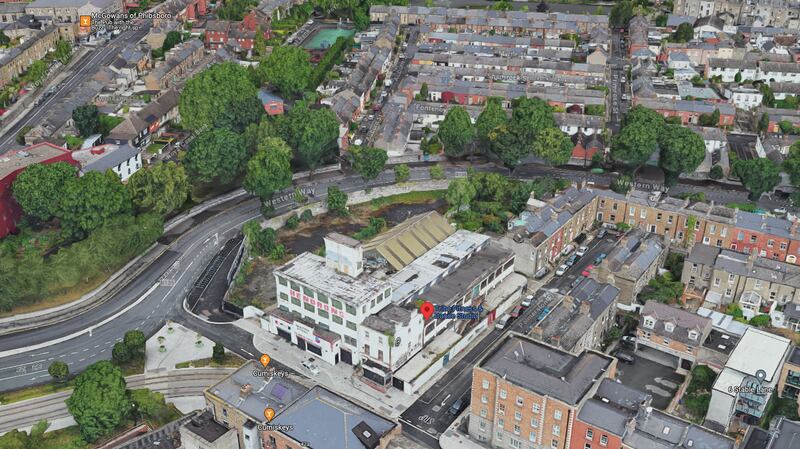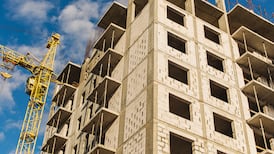In September last year an analysis conducted by The Irish Times revealed that more than 12,000 homes and commercial properties were vacant across Dublin, with 40 per cent empty for more than four years putting them at significant risk of dereliction. A quarter of vacant buildings in the capital were in the city centre, between the Royal and Grand canals, with the remainder in the suburbs and Co Dublin, databases supplied to The Irish Times by An Post and Tailte Éireann’s GeoDirectory showed.
Out of the total, more than 5,500 commercial properties are vacant across the capital, almost 1,900 of which are in the city centre. Many of these buildings, particularly blocks built in the 20th century, will never again be viable for office use, with tenants favouring newer buildings with better energy ratings and floor plans more suited to the modern office environment.
Previously owners would have demolished these buildings, replacing them with more lucrative office blocks. However, as environmental policies shift away from permitting the demolition of older buildings, and the demand for more city office space drops, owners are beginning to examine the potential of retaining and repurposing these older commercial buildings – some for living spaces in the midst of a housing crisis.
Telephone House

Work has started in recent weeks on the conversion of Telephone House, a hulking nine-storey precast concrete block on Dublin’s Marlborough Street, into a 269-bed aparthotel.
Permission was granted last year to Carra Shore, a firm controlled by hoteliers Jalaluddin and Mawash Kajani, to retain and redevelop the building and increase its height to 10 storeys.
The 1970s building, opposite An Bord Pleanála’s offices, was designed by renowned Dublin architect Brian Hogan. Its construction involved the demolition of a terrace of 13 Georgian houses, which were in tenement use.
It was originally occupied by the Department of Posts and Telegraphs and later Eircom, and then Eir. For many years it was owned by the late businessman Ben Dunne, then around 2010 it was bought by Alburn, a company controlled by solicitor and property developer Noel Smyth. In 2016 it was sold, with the consent of Nama, for a reported €17 million and has been largely vacant for eight years.
Dublin City Council had asked Cara Shore to consider developing the building for residential use. The company said this was considered but the architectural design statement submitted with the application argued it was unviable due to the need for extensive structural alteration given the position of lift cores in the building. It also said the apartments would not meet the required standards and would be mainly single aspect. The lack of escape routes, and limitations with regards to the provision of private open space, was also cited. The council accepted the argument.
The North Great George’s Street Preservation Society had objected to the increase in height and the inclusion of antennae on top of what was “already one of the ugliest buildings in the city”.
The council said it supported the retention, rather than demolition, of the building, and granted permission. An appeal was lodged with An Bord Pleanála but was later withdrawn.
Hendrons

Plans were submitted to Dublin City Council in November to convert the Hendrons building, a former factory in Dublin 7, into 93 apartments, more than two years after a co-living scheme was rejected for the modernist protected structure.
Western Way Developments Ltd had wanted to build a 280-bed shared accommodation scheme in blocks up to nine storeys high incorporating the 1940s Hendrons factory on the corner of Western Way and Dominick Street. The application was made after Minister for Housing Darragh O’Brien, in November 2020, announced a de facto ban on new co-living developments, where shared kitchen and living facilities serve multiple en suite rooms. However, the ban was only signed into law the following month.
An Bord Pleanála rejected the application saying the height would have a “negative impact” on the protected structure.
The new application, now made by Phibsborough D7 Development, seeks the conversion of the old factory building to residential and cafe/restaurant use, along with the construction of three blocks up to five storeys tall to create 93 apartments.
The industrial building had been built in 1946 for Hendron Brothers, manufacturers of boilers, compressors and tools for the building industry, to house their machinery workshops. It was designed by Vaclav Gunzl, a Czech, Skoda engineer who managed Hendrons’ machinery workshop and was built by Hendrons’ own employees, one floor at a time.
A 2008 application was made by AB Properties to demolish the building and replace it with a development up to 14 storeys tall including 48 apartments, an aparthotel, offices and a restaurant, but was rejected.
City councillors subsequently voted to add the building to the Record of Protected Structures and it remains one of the few modernist buildings on the list.
The building had for several years housed the Broadstone Artists Studios and Gallery but has been largely vacant for more than a decade.
- Sign up for push alerts and have the best news, analysis and comment delivered directly to your phone
- Find The Irish Times on WhatsApp and stay up to date
- Our In The News podcast is now published daily – Find the latest episode here









